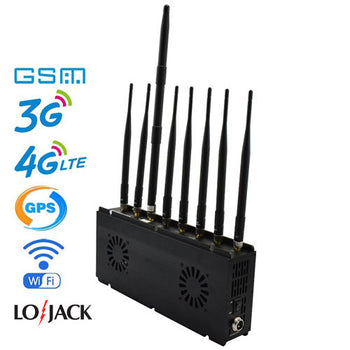Can the shielded signal of the signal shielding device achieve accurate coverage?
There are often some customers who put forward special requirements for the use environment when consulting and purchasing our signal jammers. It can be limited to a small room, outside the door or behind a wall, and it must be ensured that there is no signal jammer at all. So, in the face of such a requirement, that is to say, to make the shielded signal achieve accurate coverage, can this be achieved?
It is a pity that the various types of signal shielding instruments produced now, whether it is a low-power type or a high-power type signal shielding instrument, cannot achieve such an extremely accurate coverage.
The reasons are many, including but not limited to:
1. There are many types of mobile phone systems. When the signal jammer is turned on, the effective distance of shielding is different for mobile phones of different standards, and the mobile phone itself will also be switched in different standards;

2. The transmission power of the shielding signal emitted by the signal shielding instrument is relatively stable. However, in the on-site environment, the signals received from the surrounding mobile phone base stations are not very stable. The signals of some base stations are sometimes strong and sometimes weak, and the mobile phone sometimes switches between different base stations;
3. The shielded signal belongs to a kind of radio wave. The transmission characteristics of the radio wave emitted by the signal jammer also determine that it is impossible to achieve precise control at the "meter" level. The radio wave is in the process of transmission and diffusion. In a gradual decay process, it is impossible to achieve "one size fits all", and it will decay directly to zero when it reaches a specified distance.
4. Even if it is separated by a wall, different wall materials have different degrees of error on the shielding signal emitted by the signal jammer. For example, a partition wall such as a wood board can almost ignore the attenuation of the shielded signal.













